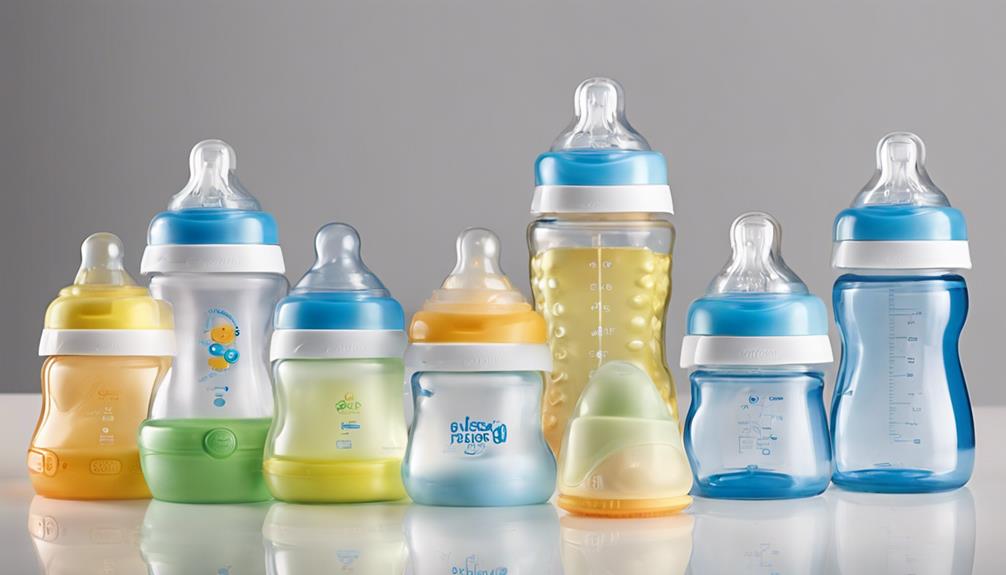As parents, we all want our newborns to feel comfortable and healthy. Have you ever thought about ways to help your newborn have a bowel movement quickly? There are effective strategies that can help relieve your baby’s discomfort. From knowing the reasons for constipation to using gentle methods, this guide provides useful advice for encouraging regular bowel movements in infants.
But what are these techniques, and how easy are they to incorporate into your routine? Let's explore these simple yet valuable insights that could make a significant difference in your baby's comfort and well-being.
Key Takeaways
- Engage in tummy time to aid digestion and bowel movements.
- Use massage and gentle exercises to promote quick relief.
- Ensure proper hydration to support healthy bowel movements.
- Seek medical guidance for persistent constipation issues.
Understanding Newborn Digestive System
Newborns have a developing digestive system that undergoes significant changes in the early days of life. It's common to see variations in bowel movements among newborns, with factors like feeding method playing an important role. Breastfed babies typically have frequent, yellow, seedy stools, a sign of their easily digestible breast milk. In contrast, formula-fed infants may experience firmer, less frequent bowel movements. Understanding these differences can help parents navigate what to expect from their baby's digestive system.
Newborns, whether breastfed or formula-fed, are susceptible to constipation due to their sensitive digestive systems. Monitoring your baby's bowel movements to make sure they're occurring regularly and are of the expected consistency is crucial. If you notice any signs of constipation, such as hard stools or discomfort during bowel movements, consulting with a healthcare provider can help address the issue promptly. Remember, each newborn is unique, and what's normal for one baby may differ for another.
Implementing Tummy Time for Bowel Movements

Understanding the importance of tummy time for newborns can greatly benefit their digestion and promote healthy bowel movements. Tummy time involves placing your baby on their stomach while they're awake and supervised.
For a breastfed baby, initiating tummy time sessions when they're alert and content can be beneficial. Gentle pressure on the baby's abdomen during tummy time can help stimulate their intestines, aiding in the natural movement of stool. This simple practice can assist in preventing constipation and encouraging regular bowel movements.
Additionally, babies may find tummy time comforting, which can help release trapped gas and stool, providing relief. Consistent implementation of tummy time can contribute to a healthy digestive system and overall well-being for your little one.
Remember to adjust the duration of tummy time based on your baby's age and comfort level, gradually increasing it as they grow stronger. By incorporating tummy time into your daily routine, you can support your baby's digestion and promote regular bowel movements effectively.
Massaging Techniques for Quick Relief
To provide quick relief for your baby's digestive discomfort, consider utilizing gentle massaging techniques that can help stimulate bowel movements and alleviate constipation. When your baby is constipated, a soothing massage can work wonders. Here are some effective massage techniques to help relieve constipation and aid in your baby's digestive health:
| Massage Techniques | Benefits |
|---|---|
| Gently massage your baby's belly in a clockwise motion | Stimulates bowel movements by promoting natural digestion flow |
| Apply gentle pressure on your baby's tummy, moving from ribcage down to diaper area | Helps relieve constipation by aiding digestion |
| Incorporate leg exercises like bicycle kicks | Relieves gas and constipation by moving legs in a cycling motion |
These techniques not only assist in relieving constipation but also contribute to your baby's overall well-being. Remember, if your baby continues to have trouble passing stool, consult a healthcare provider to rule out any underlying issues like milk allergies that may be affecting your baby's digestive tract.
Importance of Hydration for Newborns

Proper hydration is important for ensuring the well-being of your newborn, supporting healthy bowel movements, and preventing constipation. For breastfed babies, breast milk provides the ideal source of hydration, offering a perfect balance of nutrients and fluids. It's necessary to nurse frequently to keep your little one hydrated. On the other hand, formula-fed newborns may need additional water in between feedings to maintain proper hydration levels.
Recognizing the signs of dehydration in newborns is significant. Watch out for symptoms such as dry mouth, producing fewer wet diapers than usual, a sunken fontanelle (soft spot on the baby's head), or unusual lethargy. If you notice any of these signs, it's important to consult with your pediatrician promptly.
Seeking Medical Advice for Persistent Issues
If your newborn continues to experience persistent constipation issues despite home remedies, seeking prompt medical advice is essential for identifying and addressing any underlying health concerns.
Consulting with a pediatrician can help pinpoint the root cause of your newborn's constipation and provide personalized treatment options. Medical professionals have the expertise to tailor advice based on your baby's specific condition and health history, ensuring the best possible care.
Vital intervention is critical if constipation persists for weeks or if any worrying symptoms arise. Regular communication with healthcare providers is key to maintaining your newborn's digestive health and overall well-being.
Frequently Asked Questions
How Can I Get My Newborn to Poop Asap?
We can help your newborn poop by gently massaging their belly, offering a warm bath, trying bicycle leg exercises, or using a rectal thermometer. Always consult with your pediatrician before attempting any remedies to guarantee your baby's safety.
What Is the 7 Second Poop Trick?
We've found that the 7-second poop trick involves gently inserting a rectal thermometer into the baby's anus to stimulate the rectum, triggering a quick bowel movement. It's safe and effective when done correctly.
What Positions Help Newborns Poop?
To help newborns poop, we gently move their legs in a cycling motion or hold them in a squatting position. Massaging their belly in a clockwise motion or applying gentle pressure on their abdomen can also aid digestion.
How Do You Massage a Newborn to Poop?
We gently massage our newborn's belly in a clockwise motion, using warm oil or lotion to prevent friction and make it soothing. Starting below the ribcage and moving towards the pelvis with gentle pressure helps stimulate bowel movements.
Conclusion
Just as a gentle breeze guides a leaf to its destination, so too can our gentle techniques guide your newborn to relief.
Remember, patience and care are key in nurturing your baby's delicate digestive system.
By implementing the tips and remedies outlined in this guide, you can help your little one find comfort and ease in their bowel movements.
Trust in the process and always prioritize your baby's well-being.










